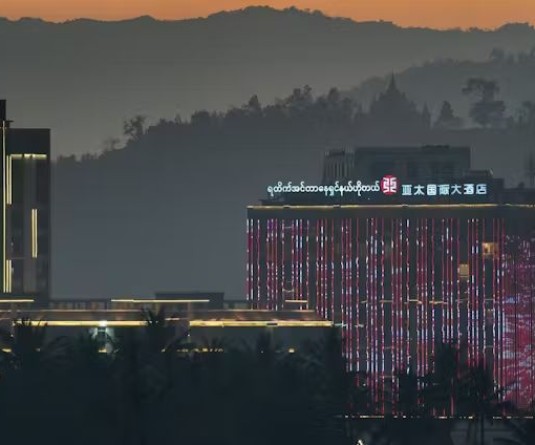
Tungshang Ningreichon
Poor health delivery system situates people in a pitiable position, where the struggle between life and death may be just a trip away from the village to the hospital. This case can be clearly but painfully illustrated from an experience encountered of a woman with a history of chronic illness. She was coming from a neighbouring village after seeing a health practitioner or more aptly a ‘visionary’. Ngahui, the village she belongs to, is supposed to have a primary sub centre but like how the story goes in all villages there is just a construction, no infrastructures. The nearest health centre is the Chingai Primary sub centre which is 14 kilometres away but without a doctor even if posted. Interactions with her relatives and the village school headmaster revealed that the woman had been sick for sometime. Deserted by her husband who is in the military service, she struggled to take care of her five children, which must have been traumatizing. The family could not afford to take her for treatment and when she was finally taken to Imphal, the doctors advised that she be taken home, indicating a prolonged and hopeless case beyond recovery.
After taking her to the practitioner they wanted to take her to Imphal again. The family could not even afford to hire a private vehicle so despite her pathetic condition she was travelling in the bus along with all the other passengers. Family, friends and relatives were waiting at the village junction to see her off. It was a painful display of human emotions- the defenselessness, vulnerability and limited capacity of human beings before the face of death. It was a pain to see the old father with a tattered Khaki shirt and a pant that has seen him through miles and days. He could not face the daughter. He just saw her, touched her and hurried off with his back facing the bus, braving and fighting the fears and tears that came uncontrollably. Everybody who had come to see her were crying. Human weaknesses I thought to myself because I felt that they should wish her well and give her strength rather than cry in front of her. The woman was also crying because she was in tremendous pain. Pain that was not just physical but emotional and mental that got aggravated with every face that she saw that she was to leave behind.
To add to her pain and burden she overheard her family saying that they could not fetch the required money. This depressed her all the more and she was refusing to go. The pain of being human. The pain of being poor. All the while the passengers were quietly and patiently waiting for them. Amidst her pain and cries, their confusion and arrangement, the passengers’ helplessness, chaos, she convulsed and let out her last breath before the eyes of all. She died even before they could even convince her to go to Imphal. What a way to die, what a place to die. The co-passengers contributed whatever amount they could. Her body was taken out from the bus and we continued the journey, life’s journey towards destiny that we do not know, not knowing when and how death will strike us too. The narrative perhaps sounds like a drama woven for an episode for TV soap but it reflects and speaks about poverty, health services, traditional practitioner and community life. Death is inevitable yet how people die is greatly determined by their economic condition and the developmental setting. It is precisely because of the lack of health services that the woman was to be taken to a distant place. It is because of poverty that the illness was prolonged reflecting how economic condition can improve or worsen ones life to the extent of causing death. Because of their poverty they could not seek medical intervention in time. If her illness was nipped at the initial stage things might have been different. She might have continued living and taking care of her young children, who are now orphans.
The case also reflects the belief of the people in traditional practitioner and healers because even if the medical doctors found it a hopeless case the family went to the practitioner with the hope that something could be done about it. The role of these traditional practitioners influencing the lives of people is something that needs some attention and documentation. The case also reflects how Naga community comes into act in times of sickness and death and help relieve the burden of the family giving moral and monetary support because it was not just the villagers and the families and the relatives but strangers in the bus too who extended help. This is just one case, which was encountered. There might be many untold cases of the similar kind. It calls for the attention of every right thinking person to come together and prevent many avoidable deaths. It can be your own family or your next door neighbor. Let us not keep saying life is in the hands of god. God has given us life and it is up to us to do justice to the life he has given us. Let us save lives. Let us contribute in whatever capacities we can. Let us impress upon the responsible bodies and agencies to give us right to health, the right to life.






